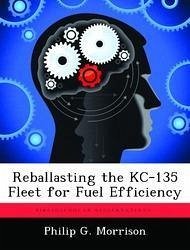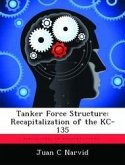The KC-135 airframe suffers from an aft Center of Gravity (CG). Boeing accounts for this aft CG by requiring that ballast fuel be carried in the forward body tank to maintain a CG forward of the aft limit. Boeing has analyzed the issue and states that 3,500 lbs of fuel is to be left in the forward body tank strictly for ballast. Using fuel in the forward body tank for ballast has two significant drawbacks; the forward body tank has a very short moment-arm necessitating more weight than that of ballast on a longer moment-arm, and ballast fuel displaces fuel that could be used for mission purposes by using the tank to hold ballast weight. Reducing aircraft gross weight is a cost issue, because excess weight incurs a carriage cost. The carriage cost for weight on the KC-135 is 4.97% of the weight in pounds of fuel burned per hour. This thesis focuses on the cost recoupment horizon for reballasting the KC-135 fleet and whether the cost will justify the fuel efficiency and increased mission capability. Specifically, this research examines replacement of fuel ballast with lead ballast on a longer moment arm and/or weight with a mission purpose, in the form of cockpit armor, to minimize ballast weight requirements. This will reduce aircraft gross weight and generate increased fuel efficiency.








